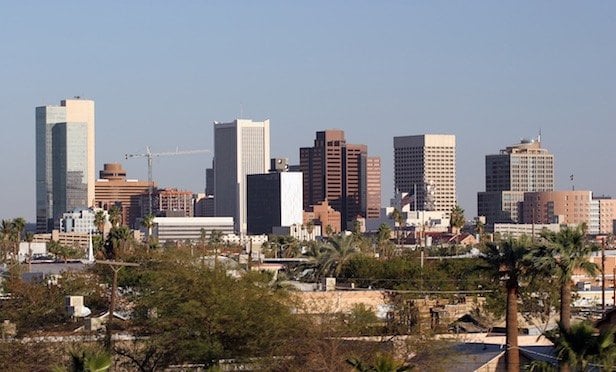 Phoenix has been the newest fire market in the West. Investors have been flocking there, following surges in population and job growth and a diversifying economy—and it has been expected to have a long runway, thanks to a late-cycle recovery. However, single-family home sales declined in the fourth quarter 2018, causing some concern about the market. According to research from Land Advisors Organization, home sales in 4Q18 were down 3.6% compared to 2017.
Phoenix has been the newest fire market in the West. Investors have been flocking there, following surges in population and job growth and a diversifying economy—and it has been expected to have a long runway, thanks to a late-cycle recovery. However, single-family home sales declined in the fourth quarter 2018, causing some concern about the market. According to research from Land Advisors Organization, home sales in 4Q18 were down 3.6% compared to 2017.
“In Phoenix, the primary catalyst when it came to decreased home sales in Q4 of 2018 was two-pronged: The first was unattractive interest rates, and the second was speculative national press attention, which always impacts home buyers' psychology. However, to contrast we have seen a strong Q1 to date,” Greg Vogel, founder of Land Advisors Organization, tells GlobeSt.com.
Despite the slowdown in home sales, prices continued to increase during the quarter. The median home price in Phoenix increases by 14.8%, rising 3.1% in December alone to $320,000. “One of the primary reasons comes down to overhead,” adds Vogel. “Costs are rising, which forces builders to raise their own prices in order to keep up with inflation. Interesting to note, but the cost isn't necessarily down to materials. One of the largest is actually labor (See story). This is a really healthy job market for employment seekers, and there are no shortage of jobs to keep them employed. Competition in regards to benefits and pay is very stiff, and this cost often translates across to the consumer.”
In addition to rising home prices, new home starts also increased by 13% last year. In 2018, there were a total of 24,000 new home permits, compared to 19,854 in 2017. Even with slowing home sales at the end of the year, Vogel says he is “not at all” concerned about overbuilding in Phoenix. “I feel that way due to a few different market identifiers. The market has seen a population growth of 90,000, in addition to 60-70,000 new jobs,” he says. “Couple these with a tight resale market, and the natural result is an increase in demand—therefore this growth in permits.”
The east valley has lead the market in terms of both demand and new supply. Now, there is a push west. “The southeast valley is stable, but running out of land. We're also seeing this in the northeast valley, with a decline in activity due to the remaining land supply,” says Vogel. “From a growth perspective, we're seeing a push west toward Surprise and Buckeye along traditional transportation corridors. Pinal County has seen an explosive share of permits in areas like Maricopa, Casa Grande and even Coolidge.”
There has also been a lot of buzz about activity in Downtown Phoenix; however, the development activity in the market is largely multifamily rental. “In terms of homes, there are several condominium projects in the downtown area that are showing various levels of success,” say Vogel. “The vast majority of development are for-rent properties, and we are just now beginning to see additional for sale product emerging.”
© Touchpoint Markets, All Rights Reserved. Request academic re-use from www.copyright.com. All other uses, submit a request to [email protected]. For more inforrmation visit Asset & Logo Licensing.






